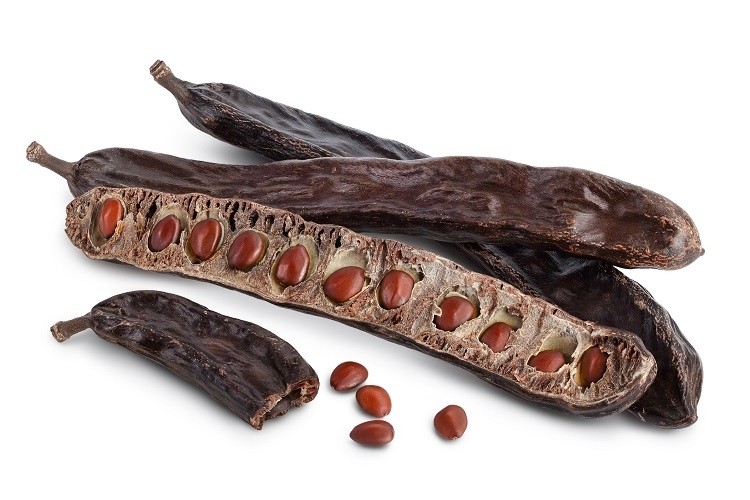Cacao-free ‘alt choc’ mimics the real thing, with 80% fewer CO2 emissions

Chocolate is one of the most consumed food products on the planet. Estimated to reach a total market size of $180bn by 2025, according to ResearchAndMarkets, chocolate is big business.
But the chocolate industry has a ‘truly dark side’, according to London-based start-up WNWN (pronounced ‘win-win’) Food Labs. “People don’t really know about the problems that go into that delicious treat they have at the end of the day,” WNWN co-founder and CEO Ahrum Pak explained.
“In summary, there is climate change, there is deforestation, and the supply chain is rife with child labour and slave labour – typically around Cote d’Ivoire and Ghana where 70-80% of the world’s supply comes from.”
Just as plant-based innovators are replacing conventional proteins with meat alternatives, so is WNWN looking to swap out conventional chocolate with a cacao-free substitute.
The result is an ‘alt chocolate’ product that is caffeine free, lower in sugar, and responsible for 80% fewer CO2 emissions than comparable products, we were told.
How do you make ‘alt choc’?
WNWN’s process is founded on traditional fermentation techniques. Not only because almost ‘everything that is fermented tastes good’, said Pak (think wine, beer, and kombucha), but because chocolate is also a fermented product.
To make chocolate, cacao beans are fermented and then roasted, before being processed into the final product. Instead of using cacao, WNWN makes its chocolate alternative from two ‘hero ingredients’: barley and carob.
Barley is an ‘incredible grain’ that humans have been consuming in bread and alcohol for several thousands of years, WNWN co-founder and CTO Dr Johnny Drain told FoodNavigator. “It has a very rich culinary tradition in the British Isles and elsewhere.”
Leaning on traditional fermentation techniques and modern-day food science, the start-up is ‘transforming’ barley into a product that is ‘mega chocolatey’, he continued.
The fermented barley is then coupled with carob – an ingredient with a somewhat weaker culinary tradition in the western world. In the UK, carob was employed as a ‘healthy’ alternative to chocolate a few decades ago, but it never really took off. “It was in the health and organic food scenes, but historically [food makers] just didn’t quite nail it.”
However, carob is chocolatey, stressed the CTO, and the combination of carob and fermented barley makes for a ‘deliciously chocolatey profile’. WNWN's carob is grown in Spain and Italy and is certified organic. "Production of carob is very sustainable and not mired by the sorts of deforestation problems that cacao is," said Dr Drain.
Without cacao, there is no cocoa butter. Instead WNWN is sourcing shea fat from Ghana.
“All the ingredients we are sourcing and sustainable, organic, and high-quality,” said Pak. “We’ve gone to several lengths to ensure our supply is so. We’re looking to create long-lasting relationships with local farmers.”
Nutritional and flavour profile for humans…and doggos!
The start-up’s first product is a dairy-free premium dark chocolate alternative. Its nutritional profile is ‘very similar’ to conventional chocolate – albeit containing slightly less sugar.
While the product’s full flavonoid and antioxidant profiles are not yet fully understood by WNWN, it plans to investigate its potential health benefits.
One obvious upside of WNWN’s product, compared to chocolate, will be appreciated by consumers’ four-legged friends, suggested Dr Drain. Dogs cannot eat conventional chocolate due to its theobromine content, which they are unable to metabolise effectively.
WNWN’s alt choc does not contain theobromine. “Your doggo can eat our chocolate,” said the CTO. “We’ve tested it on some dogs…and they absolutely go wild for it.”

So does WNWN’s alt choc product taste like chocolate? “We’re trying to replicate the experience of chocolate,” the CTO explained.
In terms of flavour, the start-up has achieved the archetypal bitterness associated with dark chocolate, as well as its ‘fruity acidity’. “We have red berries, prunes, notes of butterscotch in the long finish and a maltiness coming through from the barley.”
“It’s a flavour profile that is very similar to that of premium dark chocolate: lots of acidity and brightness, complexity, and bitterness.”
WNWN is working on an alternative to milk chocolate which is more ‘neutral’ in flavour, making for a ‘creamy’ experience with less acidity.
The experience of chocolate, however, does not lie in flavour alone. The start-up wants the melt, snap, and baking properties of chocolate, and for the most part, it has been successful. If there was one element it hasn’t quite perfected just yet, it’s the ‘snapability’, Dr Drain revealed, “but we’re almost there”.
First chocolate, next coffee and vanilla?
WNWN is launching its first product next week direct-to-consumer. Initially targeting the 18–45-year-old eco-conscious consumer, the company expects the target market with grow as it develops more products, including a ‘mass market range’.
“Pretty much anyone who likes the taste of chocolate should like our product,” said Pak.
A box of WNWN’s limited-release choc thins will retail for around £10, ‘on par’ with the price range of premium chocolate. In the future, its mass market range with sit within the mass market price bracket of around £3-4, we were told.
The B2C sales model is just the ‘first step’, however. Currently, it means WNWN can take a bigger role in educating shoppers and creating ‘fun products’. Once consumer demand is established, the business plans to expand into B2B ingredient sales.
“We can supply our product in both chocolate mass and cocoa powder form, so that is the ultimate aim. Impact only comes with scale.”
And WNWN doesn’t plan on stopping there. It is an ingredients company more than anything, the CEO suggested, and chocolate is only one product with problematic supply chains.
“Chocolate is our first project, and then we’ll be moving into other products, such as coffee and vanilla.”


















